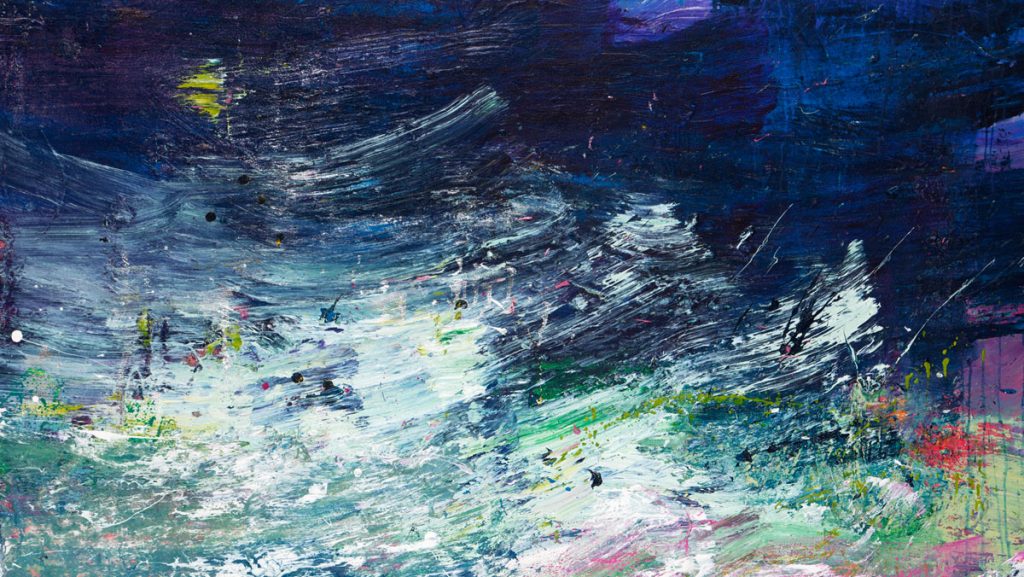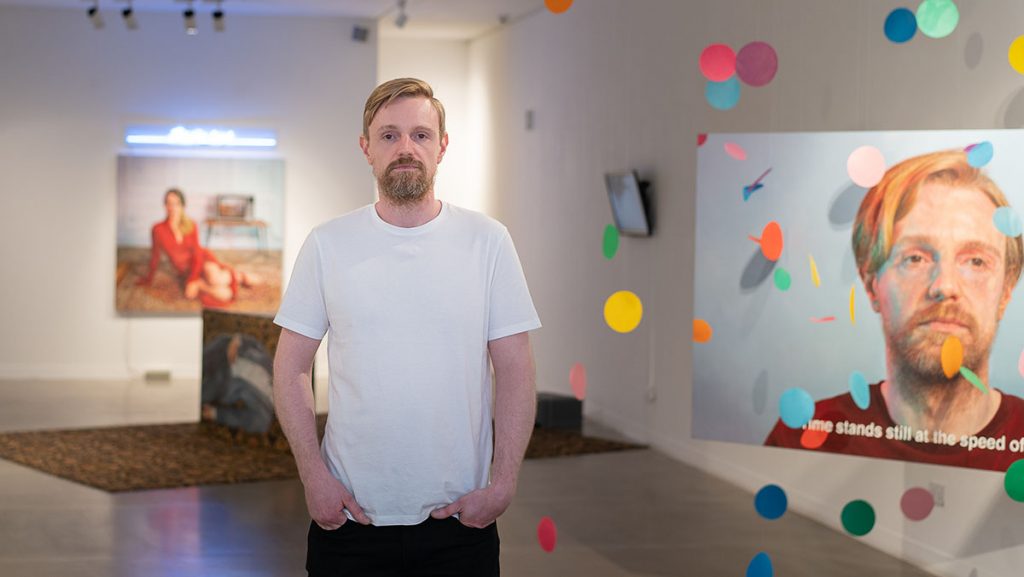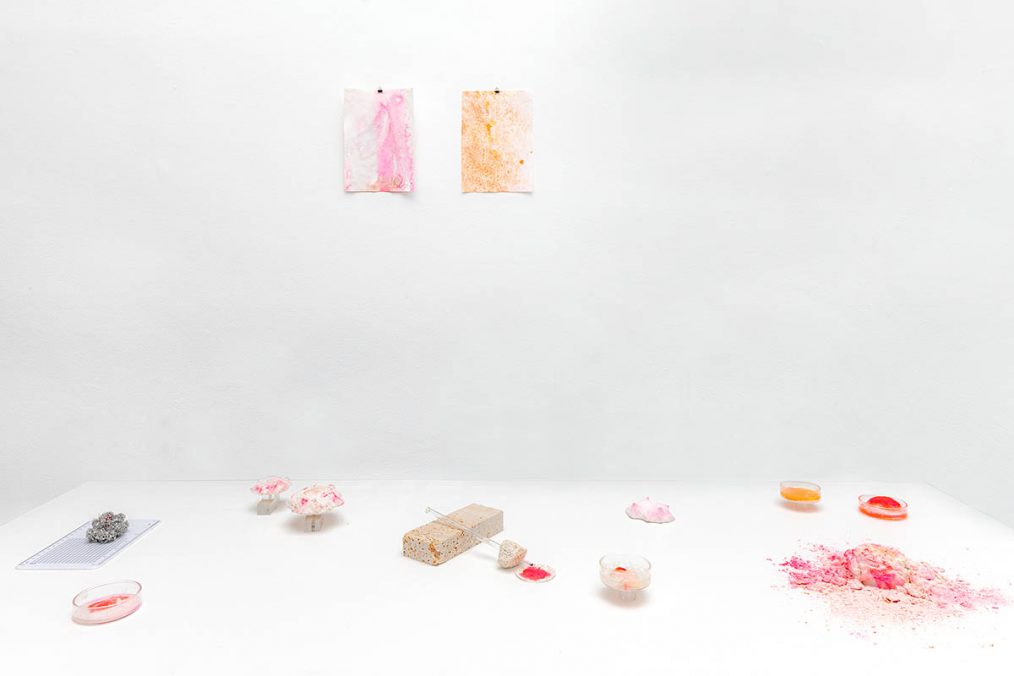
In your work you talk about differences in the processes between „vedere“ e „guardare“. Can you elucidate on that?
In the Italian language the main difference between these two terms consists in having a mean while you’re looking at something (guardare) and a more passive action while you’re seeing something (vedere). Creating images, the artist offers a very personal look at things, a particular filter to observe the world and to reveal it through an artistic processing. The intent is important, a look trained by observing, but also what you see at first glance sometimes reveals extraordinary insights.
You studied at Università Iuav di Venezia and presumably you resided there too. Describe a little bit of this life milestone.
Living in Venice was amazing and meaningful since I have been part of a unique microclimate for several years. Time seems to run faster on surfaces and at the same time, it seems to be kept pending in a liquid atmosphere where the challenge between man and nature is constant but balanced by history. I believe we are deeply influenced and shaped from the cities we live in. In my case, Venice made me understand the need to have a closer look at things, like a hand lens to use to observe the matter’s processes, realizing the similarities between micro and macro. Or simply: the textures of water and scraping walls remain fixed in your eyes, marking somehow our future way of looking at the world. Here the artists also have the chance to fully experience the Venice Biennale. For me, it was a very formative and intense experience, between openings and workshops, for example during my studies at IUAV, I had the chance to attend the Swiss Summer School at Swiss Pavilion curated by Hans Ulrich Obrist. At University there was a lively atmosphere, I had the chance to study photography with Guido Guidi, Cinema with Philippe Alain Michauld, Art with Antoni Muntadas and Adrian Paci. The dialogue continued with them even beyond the lessons, walking around the city.
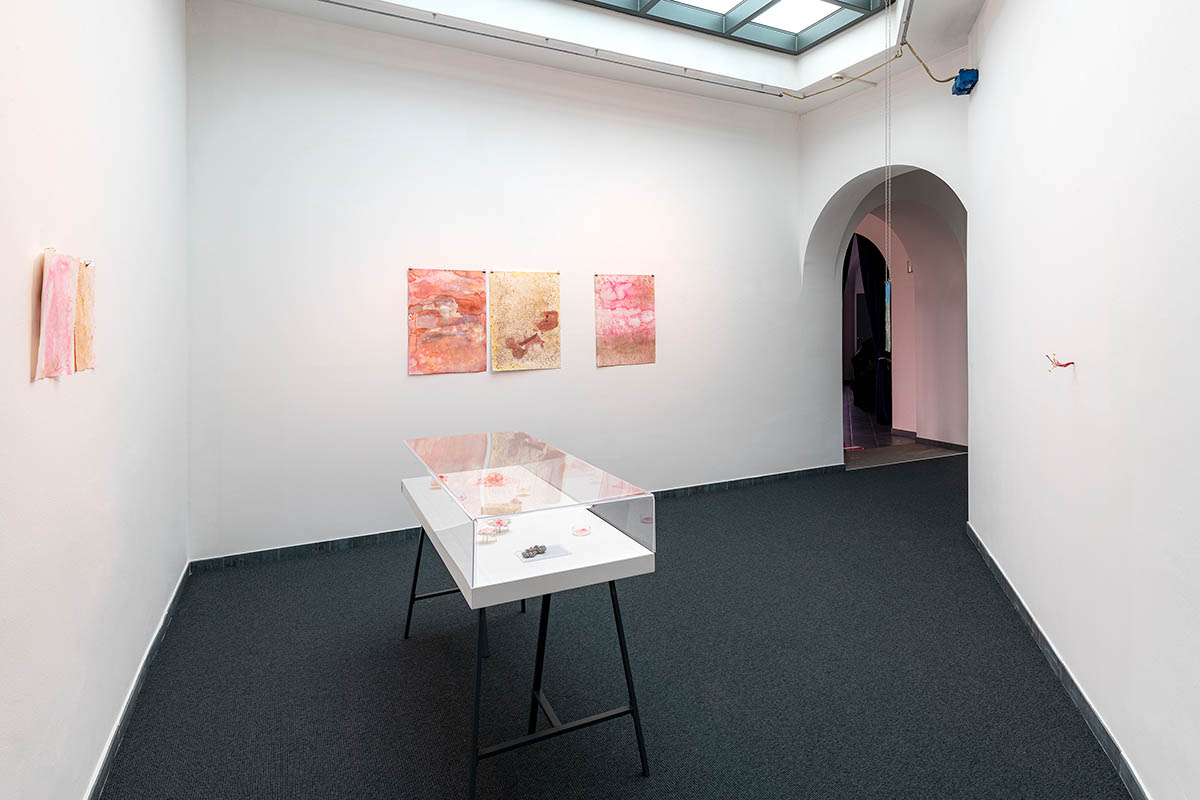
Can you name some of the materials you employ in the work you create?
Artificial marble ( plaster, pigment and animal glue ), wax, fragments of forest after the storm, dried papaya, sandpaper, disinfectants, fruit juices, porcelain, sandstones, inks, natural rubber, deteriorated stone.
How do you extract both inspiration and ideation?
I usually work for macro projects, artworks part of a series, born from very different and specialized readings. For instance, before starting to work with stone, I spent a lot of time studying petrography and materials in general, then I often relate to scientific texts but with a poetic approach. I am attracted to things that at the beginning appear different from what they are: when the visual illusion reveals itself, like a spark, I usually take a photograph, that afterwards becomes a drawing used as basis to develop a more elaborate work.
What is your approach when getting to work with a space?
The walls, ceilings and floors rich in history are a main part of my work’s concept. I experience the place as a problem to overcome; the solution requires intelligence and sensitivity. The observation of the place is the key for an installation able to express its essence and to be a new story to be told.
I always find it very interesting how artists‘ studios are shaped. Can you tell us something about yours?
My studio is currently in a greenhouse, there is a lot of light and it’s very warm, there I can test my sculptures and drawings, like in an accelerator of chemical and chromatic reactions.
I spend most of my time there, but usually in the summer I prefer to take some breaks going on working outdoors, using my laptop and books. My studio is often visited, but I believe it should be also a place of thought.
Especially your work TRAMA gives a lot of impetus to think. I think about the influence of time, about traces, about scars, and wrinkles. What role does time have in the different materials you work with and observe? And in the human being?
Time affects traces written on the “skin” of all things. But there are some materials that seem everlasting, like stone, due to its hardness, and others that appear more fragile to us, such as human skin, due to its delicacy. The skin regenerate itself, still it progressively becomes and increasingly complex texture which can be read as of our own existence’s texture, a narrative plot of events lived by the body. With my work I often exchange and confuse the materials’ perception belonging to different spheres ( mineral, human, vegetable, animal ), in order to create an illusion to be revealed. In Trama (2013 – a title which means weave in Italian), my stance was to highlight the imperfection of the human surface, like freckles, moles, spots and scars. The two photographs frame the same area of the subject, those are printed in different sizes and juxtaposed. The more detailed image comes in a small format, while the blurred one is larger; as for an Impressionist painting, the suggested approach is to look from afar, while the macro photograph requires a close-up. The themes of the epidermis and the surface are recurring themes in my artistic research, such as Sectilia (2019) and 1/1 (2018), in which I focus on the use of matter in the tradition of copy and reproducing the natural world by the human hand.
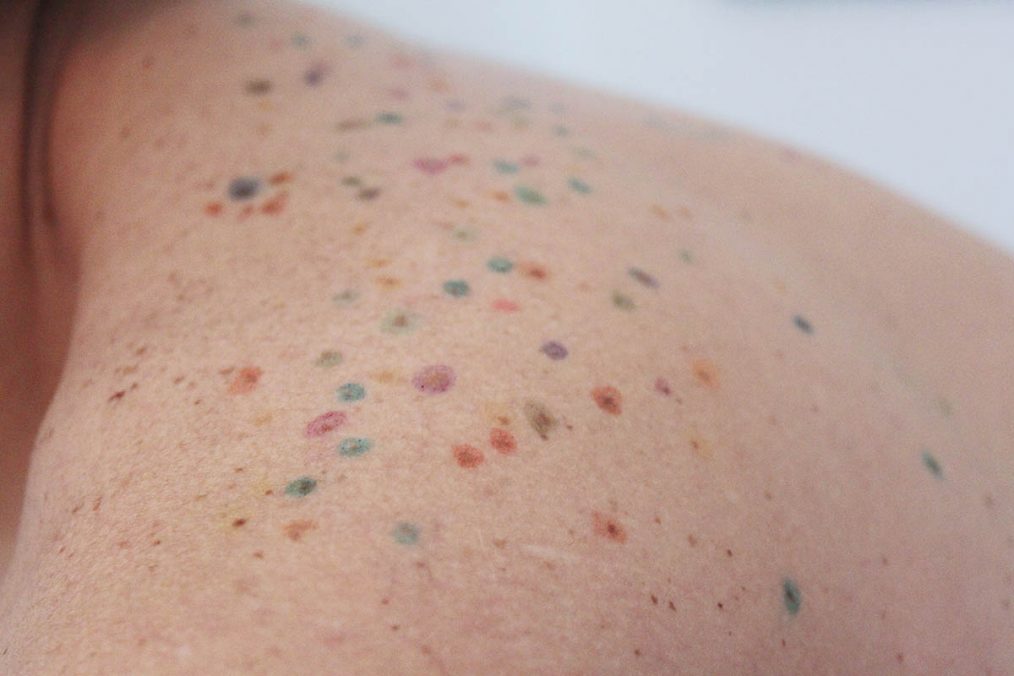
Caterina Morigi, TRAMA, 2013, Print on photographic paper, Variable dimensions at Mucho Mas! Artist-run space, Torino |Ph. Silvia Mangosio and Luca Vianello 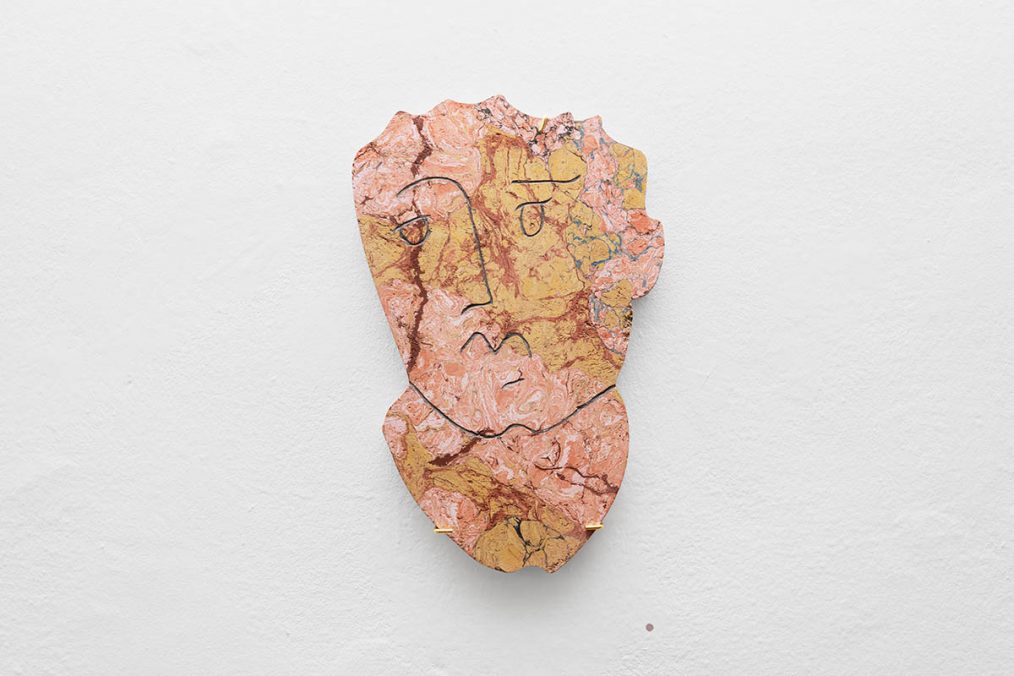
Caterina Morigi, Sectilia, details, 2019 at Mucho Mas! Artist-run space, Torino | Ph. Silvia Mangosio and Luca Vianello
Let us stay in the work TRAMA. What do you think can one also learn from its own body, or from bodies of people we share intimacy?
By connecting with your body, you learn how to perceive and accept it more and more. I am referring to the physical surface in which the traces are a distinctive feature of everyone (and not, mistake ). The marks on the skin can be involuntary like scars from surgery, or intentional, like tattoos. As Jean-Luc Nancy [1] writes “Everything that my skin meets, meets me”, since the skin is made to meet other people, it is heteronomy of the organism, it exposes to all possible external aspects.
What would you have become if you were not becoming an artist?
A sailor.
The role of language in your art.
To express my research I often borrow rhetorical figures from oral and written language, such as the synecdoche for example, in All’eternar le Opere, I take a small fragment of deteriorated marble, coming from the city of Venice, to talk about the entire landscape lagoon. After subjecting it to a contrast agent, I expose it to represent the fragility of living matter and the metaphor between geography and bodies.
I am also fascinated by the tautology or taking the names of things literally, exchanging them with materials: one day while I was living in Rome I heard about a marble marquetry in shape of a snake (serpente in Italian) placed in a church. I rushed in search of this, because it was a snake made of serpentine marble.
Portrait is…
is a sculptural portrait of a stone. In this work I deal with the theme of the copy: I selected a scrap rock from the raw surface and I ordered a stone copy made. The copy is specular, not exact. I placed the elements in a former quarry, one in front of the other, as if the two stones could look at each other. The intention is to pay homage to the stone itself of one’s own portrait, in contrast to the instrumental use that has been made of it for millennia. The realization took place through a long process of scanning the original and reproduction with a numerical control machine, whose signs remain visible from close up. For a second copy, I took a cue from the statues of the emperors that were sent to the edges of the kingdom because the king could not be everywhere. So the statues had to convey an idea/image of the emperor, and were never seen at the same time with the physical person. So I sent a second copy of the boulder to different art exhibitions and artist houses, giving rise to a multitude of intangible imagined versions in the mind of people who can only imaginate the original.
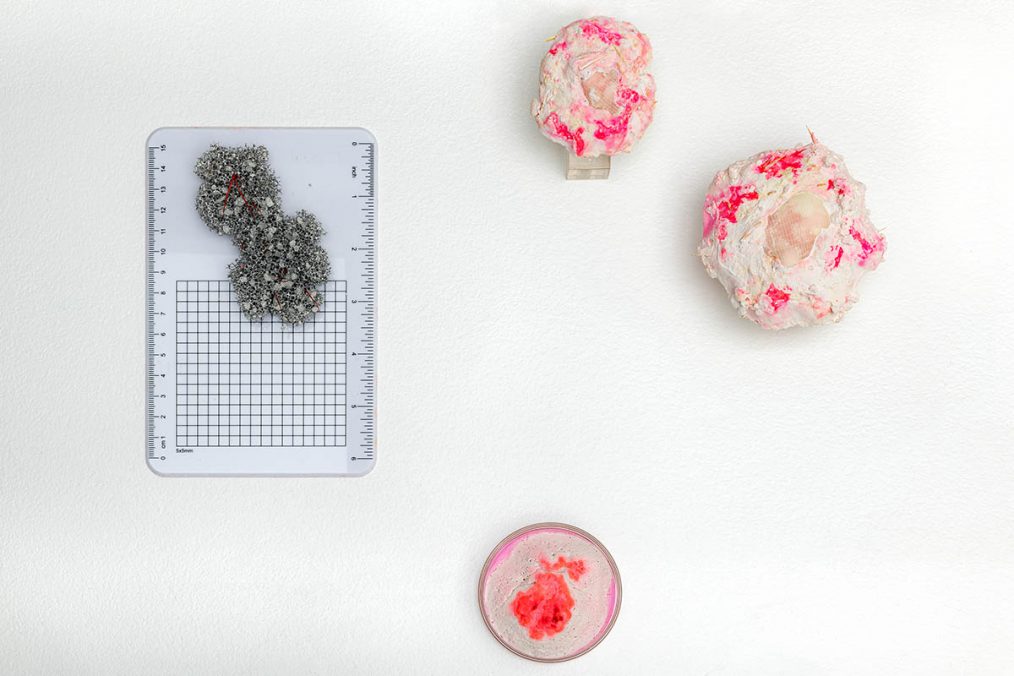
Caterina Morigi, Ecophilia, Exhibition view 2021 | Credits: Ph.Mariano Dallago, Courtesy: Museo Nazionale della Montagna, Torino 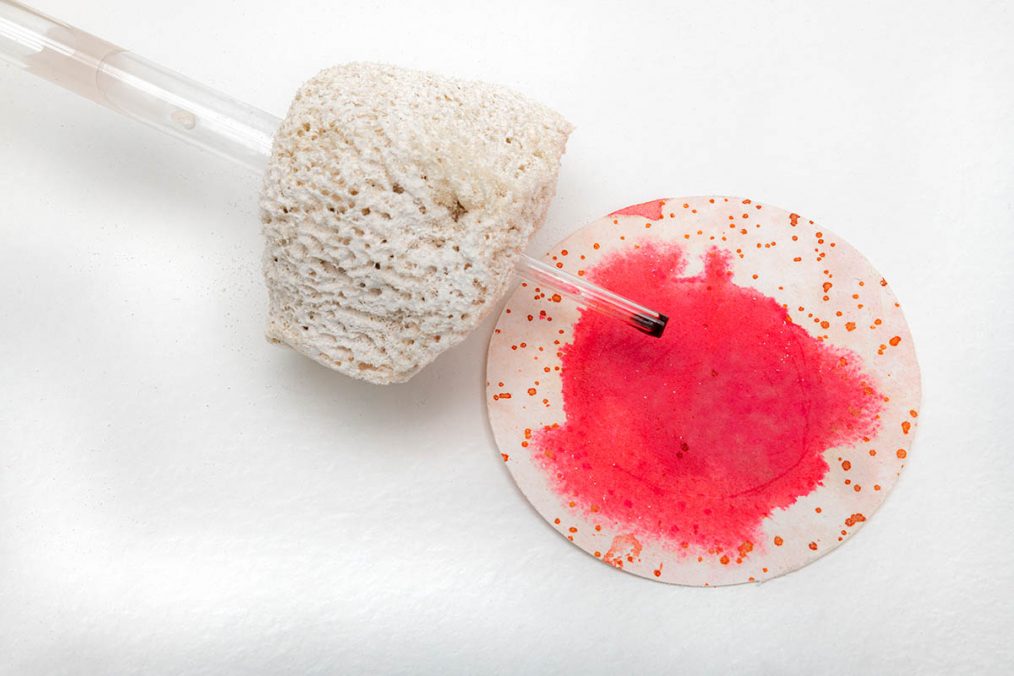
Caterina Morigi, Ecophilia, Exhibition view 2021 | Credits: Ph.Mariano Dallago, Courtesy: Museo Nazionale della Montagna, Torino
How did the idea of Elitropia arise, and how does it feel to work with medical researchers?
Elitropia is the research that I am currently carrying out: in this case, the area of my interest, the matter, is hybridized with elements and characteristics of the time we are living. More than a year ago, I was locked in my house. On the desk, I found several bottles of commonly used disinfectants. I decide to change their function, experimenting them on paper. Two clear liquids put together on the cellulose suddenly turn purple. I am surprised. I try and try again, I run out of all the antiseptics of the house. The feeling of transforming substances, like an alchemist. What surprises me even more is that these stained sheets keep on changing over time in terms of color and texture, some parts fade and others emerge. I observe and photograph them, I have never stopped making them by mixing hand gel disinfectants, wound and surface liquids. At the beginning, I was looking for these drawings to be more figurative and symbolic, then I let the forms take their own shape, in which the abstract sometimes turns into some bone textures, venous systems, corals, marine organisms, cells, molds , simply by framing the part I am interested in a circular shape (which reminds the optics of the microscope and Petri dishes). The paradox is that, although the disinfectant removes all traces of life from the sheet, these return, at least in appearance, to the paper, which seems dirty, luxuriant, lively. The bony and marine shapes that I identify in the drawings are probably suggestions of the dialogue that I started with some researchers in the biomedical field. They are studying different materials to reproduce the human bones, that are made of calcium carbonate (mineral part) and of an organic part. So the researchers try to use the exoskeletons of some marine beings that have in common with us (and with the marble) this matter. The dialogue with the researchers began when I noticed that for a previous project in the engineering-architectural field, they had made a total change in the paradigm of imitation existing in the relationship between man and nature. They had overturned the relationship of nonreciprocity, observing a human element, the bones, to create a system of conservation and care of the stony material.
To what compares marble to, in your eyes?
Marble looks like skin. In 1/1 I would like to draw attention to how the veins of marble are similar to the human epidermis: the skin and marble transparency, but also, as Marguerite Yourcenar writes, Le Temps, ce grand sculptur. As soon as the artist’s hand finishes the work, time begins to act.The stone, an attractive body, is consumed by years of touches, as but at the same time in the stone is also visible an intrinsic story, that of the accumulated substance that makes up the same rock. Sea beds, fossils, lava and much more trace the passage of the years. Then time can be read as a link between human-kind and nature, like that 1/1 draws our attention to microscopic details that reveal the incessant relationship of mutual exchange, imitation and adaptation between these two categories. In this artwork two very thin and wide porcelain slabs have been made: it is an industrial product, an architectural coating on the surface of which a natural stone texture is printed using different techniques. The tiles, which are also included in the manufacturer’s catalogue, faithfully reproduce an existing marble, in full scale, previously scanned. To this first print I added a second level of images depicting various elements: skin with moles, stains, pores, veins, but also ancient marbles. Given the high definition of the print, the observers in the museum hall confuse artificial material for the original one, that only a closer look can reveal as an illusion.
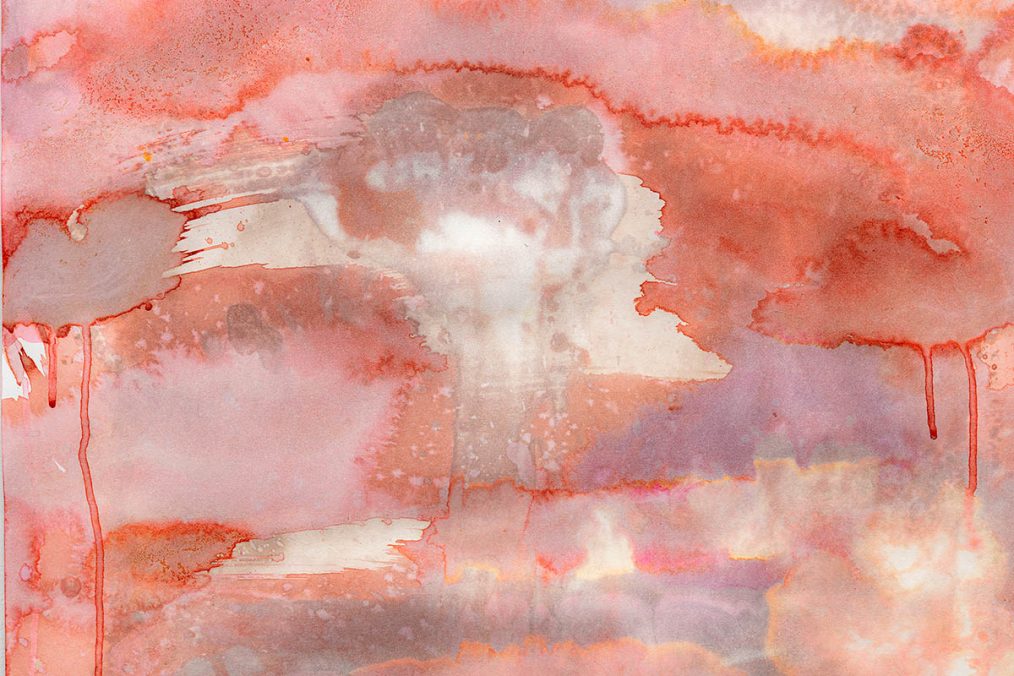
Caterina Morigi, Ecophilia, Exhibition view 2021 | Credits: Ph.Mariano Dallago, Courtesy: Museo Nazionale della Montagna, Torino 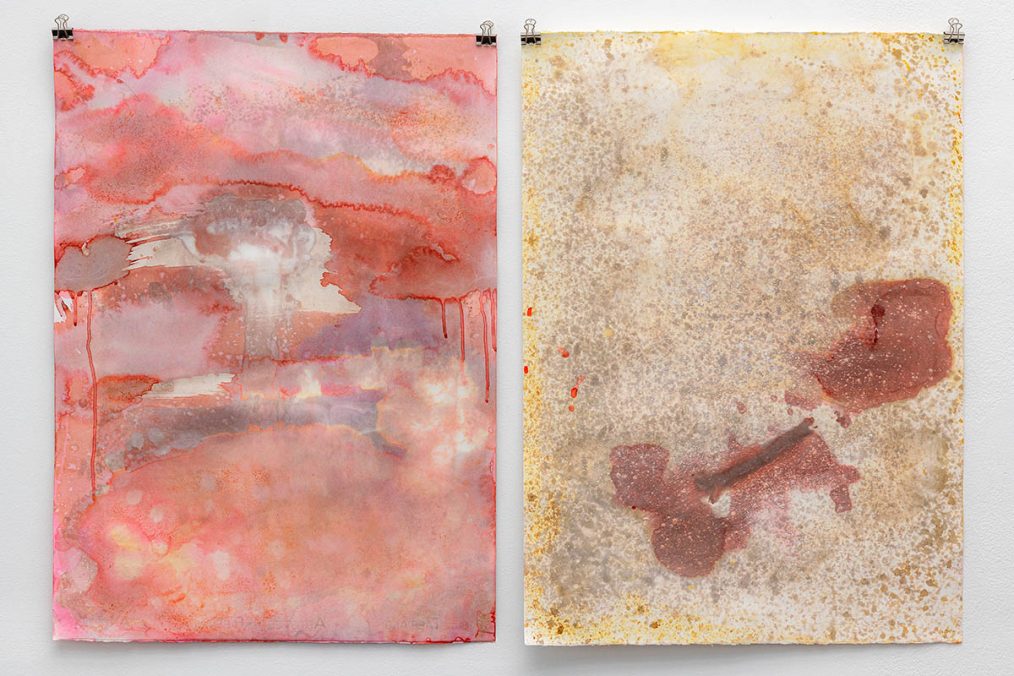
Caterina Morigi, Ecophilia, Exhibition view 2021 | Credits: Ph.Mariano Dallago, Courtesy: Museo Nazionale della Montagna, Torino
I like how you show places. Instead of photographing for example a whole church, you just photograph a detail from its pavement. How evolved this wish?
To conclude with what we begin with, I believe that my way to take photos denotes my way of looking at things. I have published a book ( Caterina Morigi. Honesty of Matter, Witty Books, 2019.) which is like a catalogue of details and surfaces but this series could tell much more than what it seems if we are willing to carefully observe. I find a lot of myself as a child in myself as an artist, I wanted to become an archaeologist. Also in another work, Sectilia, I focus on a small part of a non-central aspect of ancient art: opus sectile, a Roman decorative technique. Here I select minute slabs of ancient yellow marble, the one used by craftsmen to represent the epidermis. These crustae are enlarged to a real size, to describe the substantial belonging of human-kind and nature to the same world.
[1] Jean-Luc Nancy at Festival della Filosofia di Modena 2009, www.festivalfilosofia.it
Address and contact:
Caterina Morigi
Via Riva di Reno 57, Bologna
www.caterinamorigi.com
www.instagram.com/caterinamorigi/
About the Interviewer: Erka Shalari (*1988, Tirana) is a Vienna-based art author. She focuses on discovering independent young and emerging artists, unconventional exhibition spaces, and galleries that have deliberately broken new ground in their working methods. In this regard, she relies on unorthodox publishing practices, coupling these with a nonchalant manner of writing. The work oscillates between articles for magazines, exhibition texts and press releases.




